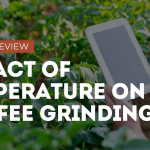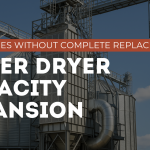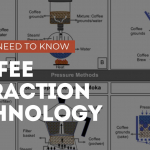Introduction: The Critical Role of Extract Concentration in Modern Coffee Production
In today’s competitive coffee market, producers face increasing pressure to maximize efficiency while maintaining—or even enhancing—the distinctive flavor profiles that differentiate their products. Extract concentration represents a critical phase in coffee production, directly impacting product quality, storage stability, transportation costs, and ultimately, profitability.
As global coffee consumption continues to rise, with the ready-to-drink and instant coffee segments experiencing particularly robust growth, manufacturers must optimize their concentration processes to meet demand without compromising quality. The method chosen for concentrating coffee extracts significantly influences not only operational efficiency but also the sensory characteristics of the final product that reaches consumers.
Modern coffee extract concentration technologies have evolved considerably from traditional thermal evaporation methods, offering producers new opportunities to preserve delicate aromatic compounds, reduce energy consumption, and achieve higher concentration ratios. For coffee producers and manufacturers considering equipment upgrades, understanding the comparative advantages of different concentration methods is essential for making informed investment decisions.
This article examines five innovative coffee extract concentration technologies, providing a detailed analysis of each method’s technical principles, impact on product quality, operational requirements, and economic considerations. Whether you operate a small specialty coffee business or a large-scale industrial production facility, this comparison will help you identify the most suitable concentration method for your specific needs.
Comparative Overview: 5 Coffee Extract Concentration Methods
| Method | Key Advantages | Limitations | Ideal Applications | Relative Cost |
|---|---|---|---|---|
| Traditional Thermal Evaporation | • Well-established technology<br>• Lower initial investment<br>• Scalable for industrial volumes | • Heat exposure can degrade volatile compounds<br>• Energy-intensive<br>• Potential for thermal damage to flavor | • Large-scale commercial production<br>• Budget-conscious operations<br>• Products where some flavor alteration is acceptable | $$ |
| Freeze Concentration | • Superior flavor retention<br>• Preserves volatile aromatics<br>• Minimal thermal damage | • Higher operational costs<br>• Slower processing time<br>• Specialized equipment required | • Premium coffee products<br>• Specialty coffee applications<br>• Quality-focused production | $$$$ |
| Membrane Filtration/Reverse Osmosis | • Excellent soluble solids retention<br>• Room temperature operation<br>• Energy efficient | • Membrane fouling challenges<br>• Regular maintenance required<br>• Limited concentration ratios | • Medium-scale operations<br>• Environmentally conscious producers<br>• Balanced quality/efficiency needs | $$$ |
| Centrifugal Separation | • Rapid processing time<br>• Continuous operation capability<br>• Relatively compact equipment | • Limited concentration ratios in single pass<br>• Can require multiple processing stages<br>• Complex maintenance | • High-volume operations<br>• Space-constrained facilities<br>• Time-sensitive production | $$$ |
| Cryoconcentration | • Exceptional aroma preservation<br>• Maintains delicate flavor notes<br>• Minimal product degradation | • Highest energy costs<br>• Longest processing time<br>• Specialized technical expertise required | • Ultra-premium coffee products<br>• Specialty and micro-batch production<br>• Flavor-critical applications | $$$$$ |
Detailed Analysis of Coffee Extract Concentration Methods
Traditional Thermal Evaporation
Technical Process
Traditional thermal evaporation represents the oldest and most widely implemented concentration method in the coffee industry. This process relies on heat application to reduce water content through vaporization, resulting in a concentrated coffee extract. Modern thermal evaporation systems typically employ multiple effects to improve energy efficiency through vapor recompression and heat recovery mechanisms.
The process begins with feeding coffee extract into a series of evaporators operating at progressively lower pressures. This design allows the vapor generated in one effect to serve as the heating medium for the subsequent effect, significantly reducing energy requirements compared to single-effect systems. Falling film evaporators, which distribute the extract as a thin film over heated tubes, have become standard in the industry due to their improved heat transfer efficiency and reduced residence time.
Impact on Flavor Profile
While thermal evaporation technology has advanced considerably, heat exposure remains an inherent challenge for preserving coffee’s complex flavor profile. The process can lead to:
- Partial loss of volatile aromatic compounds
- Thermal degradation of certain flavor precursors
- Potential development of “cooked” notes in the finished product
- Reduced brightness in the cup profile
Modern thermal evaporators mitigate these effects through lower operating temperatures, reduced residence time, and improved vapor recovery systems that capture and reintroduce some volatile compounds. Nevertheless, thermal concentration generally results in more noticeable flavor alterations than non-thermal alternatives.
Energy Efficiency
Multi-effect thermal evaporation systems offer significantly improved energy efficiency compared to single-effect designs, with energy consumption typically ranging from 0.3-0.5 kg steam per kg of water removed. Mechanical vapor recompression (MVR) and thermal vapor recompression (TVR) technologies can further reduce energy requirements by recycling vapor streams.
Despite these improvements, thermal evaporation remains more energy-intensive than membrane-based or freeze concentration alternatives, contributing to both operational costs and environmental impact.
Scale Requirements
Thermal evaporation systems scale effectively from medium to industrial production volumes, with equipment available to process from 500 kg/h to over 10,000 kg/h of feed material. The technology is less economically viable for small-scale operations due to significant capital investment and energy infrastructure requirements.
Implementation Costs
Initial investment for a modern multi-effect thermal evaporation system ranges from $200,000 for smaller setups to several million dollars for industrial-scale installations with advanced heat recovery systems. While capital costs exceed those of traditional single-effect systems, the enhanced energy efficiency typically delivers return on investment within 2-4 years for operations running at full capacity.
Real-World Implementation
Nestlé’s production facilities in Brazil and Vietnam employ advanced multi-effect thermal evaporation systems with mechanical vapor recompression, achieving concentration ratios of up to 50% solids while optimizing energy consumption. These systems process over 5,000 kg of coffee extract hourly, demonstrating the industrial scalability of modern thermal evaporation technology.
Freeze Concentration
Technical Process
Freeze concentration represents a premium approach to coffee extract concentration, utilizing freezing rather than heating to separate water from dissolved coffee solids. The process exploits the principle that when a coffee solution begins to freeze, initially formed ice crystals consist primarily of water, leaving behind a more concentrated coffee solution.
A typical freeze concentration system incorporates:
- Controlled crystallization of the extract at temperatures just below freezing
- Crystal growth phase where ice crystals increase in size
- Separation of ice crystals from the concentrated liquid through filtration or centrifugation
- Washing of ice crystals to recover entrained coffee solids
- Reprocessing of wash water to maximize yield
Advanced systems employ progressive freeze concentration (PFC) with scraped surface heat exchangers that promote uniform crystal formation and growth, enhancing separation efficiency.
Impact on Flavor Profile
Freeze concentration’s primary advantage lies in its exceptional preservation of coffee’s sensory characteristics:
- Superior retention of volatile aromatic compounds
- Preservation of delicate flavor notes that would degrade during heating
- Minimal thermal stress on coffee components
- Enhanced brightness and clarity in the final product
Blind tastings consistently demonstrate that freeze-concentrated extracts retain flavor profiles remarkably similar to the original brew, making this method particularly valuable for specialty coffee applications where distinctive flavor characteristics represent a key market differentiator.
Energy Efficiency
While freeze concentration requires substantial energy for refrigeration systems, modern equipment incorporates extensive heat recovery mechanisms that significantly improve overall efficiency. Energy consumption typically ranges from 0.8-1.2 kWh per kg of water removed, higher than thermal methods but offset by quality benefits.
The process requires stable electrical supply rather than steam infrastructure, potentially simplifying implementation in some facilities but complicating it in others, depending on existing utility availability.
Scale Requirements
Freeze concentration systems are available for processing capacities from 50 kg/h to 2,000 kg/h, making the technology suitable for medium-scale specialty operations through moderately large industrial applications. The technology scales less effectively than thermal evaporation for very high volume production, often necessitating multiple parallel processing lines.
Implementation Costs
Investment costs for freeze concentration systems range from $350,000 for smaller installations to $3-5 million for large-scale industrial applications. Operating costs exceed those of thermal evaporation primarily due to higher energy consumption and more complex maintenance requirements for refrigeration systems.
The premium pricing commanded by freeze-concentrated products often justifies these higher costs, particularly in specialty coffee segments where quality parameters drive purchase decisions.
Real-World Implementation
Illycaffè’s production facility in Trieste, Italy implemented a multi-stage freeze concentration system for their premium ready-to-drink coffee products, achieving concentration levels of 35% solids while maintaining the distinctive flavor profile that defines their brand. The company reports that consumer taste panels consistently rate freeze-concentrated products higher than those produced through alternative methods.
Membrane Filtration/Reverse Osmosis
Technical Process
Membrane filtration technologies, particularly reverse osmosis (RO), represent the newest generation of commercial coffee concentration methods. These processes employ semi-permeable membranes that selectively allow water molecules to pass through while retaining coffee solids and flavor compounds.
In reverse osmosis systems:
- Pre-filtered coffee extract is pumped at high pressure (typically 30-60 bar) against specialized membranes
- Water permeates through the membrane while coffee solids remain in the retentate
- Multi-stage configurations progressively increase concentration levels
- Crossflow design minimizes membrane fouling and maintains separation efficiency
Advanced systems incorporate nanofiltration membranes with modified selectivity characteristics that allow certain low molecular weight compounds to permeate, enabling customization of the final extract composition.
Impact on Flavor Profile
Membrane filtration offers several advantages for preserving coffee quality:
- Room temperature operation eliminates thermal degradation
- Selective retention based on molecular size preserves intact flavor compounds
- No phase change or exposure to extreme conditions
- Consistent, reproducible concentration results
The process does present some limitations, including potential loss of certain volatile compounds through the membrane and challenges in achieving very high concentration ratios without supplementary methods.
Energy Efficiency
Membrane systems deliver excellent energy efficiency, typically consuming 0.1-0.2 kWh per kg of water removed—significantly lower than thermal or freeze concentration alternatives. This efficiency derives from eliminating phase change requirements, though high-pressure pumps still represent substantial energy consumers within the system.
The technology’s environmental footprint benefits from lower energy requirements and reduced water usage through permeate recycling in cleaning systems.
Scale Requirements
Reverse osmosis and nanofiltration systems scale effectively across a wide range of production volumes, from small systems processing 100 kg/h to industrial installations handling over 5,000 kg/h. Modular design allows for incremental capacity expansion, reducing initial capital requirements for growing operations.
The technology particularly suits mid-sized operations seeking balance between quality preservation and operational efficiency.
Implementation Costs
Initial investment for membrane concentration systems ranges from $150,000 for basic installations to $1-2 million for advanced multi-stage configurations with automated cleaning systems. Ongoing costs include membrane replacement (typically every 12-24 months), specialized cleaning chemicals, and energy for high-pressure pumping systems.
Total operating costs generally fall between thermal evaporation and freeze concentration methods, offering an attractive middle ground for many producers.
Real-World Implementation
Starbucks implemented large-scale membrane concentration systems in their cold brew production facilities, achieving concentration ratios of 3:1 while maintaining the distinctive flavor profile of their cold brew products. The company cited energy savings exceeding 40% compared to previous thermal concentration methods as a key factor in the technology adoption decision.
Centrifugal Separation
Technical Process
Centrifugal separation leverages differences in specific gravity between water and coffee solids to achieve concentration through application of centrifugal force. While not capable of achieving final concentration levels independently, this method often serves as an initial concentration step before other technologies or as a component in hybrid concentration systems.
Modern centrifugal concentrators for coffee processing typically employ:
- High-speed rotating chambers (typically 3,000-10,000 RPM)
- Precisely controlled feed introduction systems
- Continuous discharge mechanisms for separated components
- Automated balance control to maintain operational stability
The technology has evolved significantly from basic centrifuges to sophisticated separation systems with multiple extraction points allowing for graduated separation of components with different densities.
Impact on Flavor Profile
Centrifugal separation offers several quality advantages:
- Minimal thermal stress on coffee components
- Very short residence time limiting exposure to oxygen
- Preservation of volatile compounds due to closed-system operation
- Retention of suspended solids that contribute to mouthfeel
The method’s limited concentration capability means it rarely serves as a standalone process, instead functioning within integrated systems where its rapid processing capability complements other concentration technologies.
Energy Efficiency
Centrifugal systems demonstrate excellent energy efficiency for initial concentration, typically consuming 0.2-0.3 kWh per kg of water removed during early separation stages. Efficiency diminishes as concentration increases due to rising viscosity, explaining why the method typically transitions to alternative technologies for final concentration.
The rapid processing capability also contributes to operational efficiency through higher throughput and reduced equipment footprint.
Scale Requirements
Centrifugal separation technology scales effectively from small batch processing (50-100 kg/h) to continuous industrial operations exceeding 10,000 kg/h. Modular systems allow for capacity expansion through parallel processing lines, while newer vertical integration approaches incorporate centrifugal components within unified multi-technology concentration systems.
Implementation Costs
Investment costs for centrifugal separation systems range from $100,000 for basic installations to $1-1.5 million for advanced high-capacity systems with integrated control and monitoring capabilities. Operating costs benefit from relatively simple maintenance requirements, though high-speed components require regular inspection and periodic replacement.
When integrated with complementary technologies in hybrid systems, centrifugal separation often improves overall system economics through reduced load on more energy-intensive final concentration stages.
Real-World Implementation
JAB Holding Company implemented hybrid concentration systems incorporating initial centrifugal separation followed by membrane filtration in their Peet’s Coffee production facility, reporting 30% improvement in overall process efficiency and 25% reduction in energy consumption compared to their previous thermal concentration process.
Cryoconcentration
Technical Process
Cryoconcentration represents the most sophisticated and technically complex coffee concentration method, combining principles of freeze concentration with advanced cryogenic technology. Unlike conventional freeze concentration, which typically operates just below freezing temperatures, cryoconcentration employs significantly lower temperatures to achieve more complete separation and higher concentration ratios.
The process typically involves:
- Flash-freezing coffee extract using liquid nitrogen or similar cryogenic medium
- Controlled thawing under precise temperature gradient conditions
- Separation of concentrated extract from ice through specialized filtration
- Multiple cycles to progressively increase concentration
- Advanced aroma recovery systems to capture and reincorporate volatile compounds
This methodical approach allows for exceptional control over the separation process, achieving concentration levels exceeding 50% solids while minimizing thermal stress on coffee components.
Impact on Flavor Profile
Cryoconcentration offers unparalleled quality preservation:
- Nearly complete retention of volatile aromatic compounds
- Preservation of temperature-sensitive flavor precursors
- Minimal oxidation due to low-temperature processing
- Superior aroma intensity in the final product
Blind tastings consistently demonstrate that cryoconcentrated extracts maintain flavor characteristics virtually indistinguishable from the original brew, with particularly notable preservation of delicate acidity and floral notes that often diminish during other concentration processes.
Energy Efficiency
The exceptional quality benefits of cryoconcentration come with significant energy requirements, typically consuming 1.5-2.0 kWh per kg of water removed—substantially higher than alternative methods. The process requires specialized cryogenic infrastructure and extensive insulation to maintain ultra-low temperatures, contributing to both capital and operational costs.
Some facilities offset these costs through cryogen recycling systems and integration with other cold-chain processes, improving overall energy utilization.
Scale Requirements
Cryoconcentration systems have historically targeted smaller production volumes, with most installations processing between 25-500 kg/h. Recent technological advances have expanded capacity ranges, though the process remains more suitable for premium small-batch production than high-volume industrial applications.
The method particularly suits specialty coffee producers focused on ultra-premium market segments where price sensitivity is lower and quality differentiation critical.
Implementation Costs
Investment for cryoconcentration systems typically ranges from $500,000 for pilot-scale installations to $3-7 million for production-scale facilities with advanced aroma recovery systems. Operating costs significantly exceed those of alternative methods, driven by cryogen consumption, specialized maintenance requirements, and higher energy consumption.
These premium costs limit adoption to producers capable of commanding corresponding price premiums for exceptional quality products.
Real-World Implementation
Blue Bottle Coffee implemented a modified cryoconcentration system for their premium ready-to-drink cold brew products, achieving concentration ratios of 4:1 while maintaining the distinctive flavor characteristics of their single-origin coffees. The company positioned these products at significant price premiums, successfully marketing the superior flavor preservation as justification for the higher retail cost.
Future Trends in Coffee Extract Concentration Technology
The coffee extract concentration landscape continues to evolve, with several emerging trends likely to shape technology development and adoption over the coming years:
Hybrid Systems Integration
Rather than relying on single concentration technologies, leading manufacturers increasingly implement integrated hybrid systems that leverage the strengths of complementary methods. Examples include initial concentration through membrane filtration followed by freeze concentration for final concentration, or centrifugal separation preceding thermal evaporation to reduce energy requirements.
These hybrid approaches optimize both quality preservation and operational efficiency, allowing producers to target specific concentration stages with the most appropriate technology.
Energy Recovery Optimization
All concentration methods benefit from ongoing advances in energy recovery systems, with particular focus on:
- Enhanced heat exchanger efficiency in thermal systems
- Pressure energy recovery in membrane processes
- Phase-change energy capture in freeze concentration
- Mechanical energy recapture in centrifugal systems
These developments progressively reduce the energy gap between different concentration technologies, potentially expanding the economic viability of premium methods for mainstream production.
Aroma Recovery Integration
Advanced aroma recovery systems increasingly accompany all concentration methods, capturing volatile compounds that would otherwise be lost during processing and reintroducing them into the final product. This technology particularly enhances thermal evaporation quality outcomes, narrowing the sensory gap between thermal and cold concentration methods.
Digitalization and Process Control
AI-driven process control systems with real-time quality monitoring represent a significant trend across all concentration technologies. These systems optimize operating parameters based on incoming extract characteristics, maintaining consistent quality despite variations in feed properties while maximizing operational efficiency.
Sustainability Focus
Environmental considerations increasingly influence technology selection, with manufacturers evaluating concentration methods based on:
- Carbon footprint across the entire process lifecycle
- Water consumption and wastewater generation
- Energy source flexibility including renewable integration
- Chemical usage for cleaning and maintenance
These sustainability considerations often favor membrane and certain hybrid concentration systems, though ongoing efficiency improvements benefit all technologies.
Conclusion: Selecting the Right Coffee Extract Concentration Method
Choosing the optimal concentration technology requires balancing multiple factors specific to your operation:
Product Quality Requirements
For premium specialty products where distinctive flavor characteristics drive consumer preference, freeze concentration and cryoconcentration deliver superior results despite higher operational costs. For mainstream commercial products with emphasis on consistent but less differentiated flavor profiles, modern thermal evaporation or membrane systems may offer more advantageous economics.
Production Scale
Large industrial operations benefit from the established scalability and lower operational costs of thermal evaporation, potentially supplemented with aroma recovery systems to enhance quality. Smaller specialty producers often find better alignment with freeze concentration or membrane technologies that offer quality advantages without requiring industrial-scale volumes for economic viability.
Infrastructure Compatibility
Existing facility infrastructure significantly impacts implementation economics. Operations with abundant steam availability may find thermal systems more economical, while those with limited thermal resources but robust electrical supply might better suit membrane or freeze concentration technologies.
Economic Considerations
Beyond initial capital costs, comprehensive economic analysis must consider:
- Energy costs specific to your region and available supply
- Labor requirements and technical expertise availability
- Maintenance infrastructure and spare parts access
- Product pricing potential in target markets
For many producers, the optimal approach involves a phased implementation strategy, beginning with technology that addresses immediate challenges while establishing foundation for future enhancements as market position strengthens.
The Path Forward
As coffee markets continue to evolve with increasing emphasis on quality differentiation, extract concentration technology represents a critical competitive factor for producers across all market segments. Thorough evaluation of available technologies against your specific operational requirements and market strategy will identify the optimal concentration approach to enhance your products, improve operational efficiency, and strengthen market position.
For detailed consultation regarding your specific coffee extract concentration needs, contact our technical specialists who can provide customized analysis and recommendations based on your unique production requirements and quality objectives.




